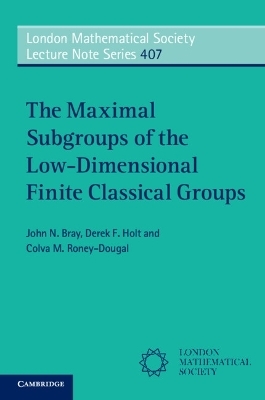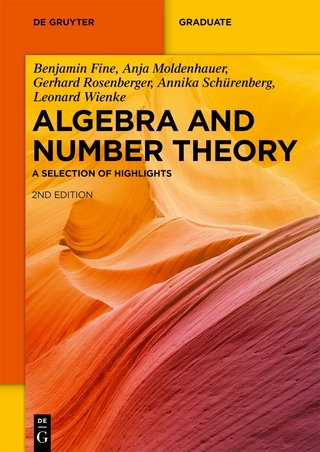
The Maximal Subgroups of the Low-Dimensional Finite Classical Groups
Cambridge University Press (Verlag)
978-0-521-13860-4 (ISBN)
This book classifies the maximal subgroups of the almost simple finite classical groups in dimension up to 12; it also describes the maximal subgroups of the almost simple finite exceptional groups with socle one of Sz(q), G2(q), 2G2(q) or 3D4(q). Theoretical and computational tools are used throughout, with downloadable Magma code provided. The exposition contains a wealth of information on the structure and action of the geometric subgroups of classical groups, but the reader will also encounter methods for analysing the structure and maximality of almost simple subgroups of almost simple groups. Additionally, this book contains detailed information on using Magma to calculate with representations over number fields and finite fields. Featured within are previously unseen results and over 80 tables describing the maximal subgroups, making this volume an essential reference for researchers. It also functions as a graduate-level textbook on finite simple groups, computational group theory and representation theory.
John Bray obtained a PhD from the University of Birmingham in 1997, which was followed by postdoctoral positions at Birmingham and Queen Mary. He has held a lectureship at Queen Mary, University of London, since 2007. He is heavily involved with the online web-atlas of group representations, a popular resource in the group theory community. Derek Holt has been at the University of Warwick since 1978, where he was made a professor in 2001. He has been active in group theory research for over 40 years and has over 100 publications to his name. He was awarded the LMS Junior Whitehead Prize in 1981 for his solution to the long-standing problem of classifying groups with more than one end. He has co-authored several books including the influential graduate text Handbook of Computational Group Theory (2005). He is Editor-in-Chief of the London Mathematical Society Journal of Computation and Mathematics, and is on the editorial board of several other journals. Colva Roney-Dougal received a PhD from Queen Mary, University of London, in 2001, following which she held postdoctoral positions in Sydney and St Andrews. She has been a lecturer at St Andrews since 2005 and was appointed to Senior Lecturer in 2010. Her research on the classification of primitive permutation groups has been turned into highly-used databases in MAGMA and GAP. In addition, she is heavily involved in the popularisation of mathematics, and in this capacity is a regular presence on Radio 4's 'In Our Time' with Melvyn Bragg, as well as other national radio shows.
Preface; 1. Introduction; 2. The main theorem, and types of geometric subgroups; 3. Geometric maximal subgroups; 4. Groups in class S: cross characteristic; 5. Groups in Class S: defining characteristic; 6. Containments involving S-subgroups; 7. Maximal subgroups of exceptional groups; 8. Tables.
| Reihe/Serie | London Mathematical Society Lecture Note Series |
|---|---|
| Zusatzinfo | Worked examples or Exercises; 100 Tables, black and white |
| Verlagsort | Cambridge |
| Sprache | englisch |
| Maße | 152 x 228 mm |
| Gewicht | 640 g |
| Themenwelt | Mathematik / Informatik ► Mathematik ► Algebra |
| ISBN-10 | 0-521-13860-4 / 0521138604 |
| ISBN-13 | 978-0-521-13860-4 / 9780521138604 |
| Zustand | Neuware |
| Informationen gemäß Produktsicherheitsverordnung (GPSR) | |
| Haben Sie eine Frage zum Produkt? |
aus dem Bereich


